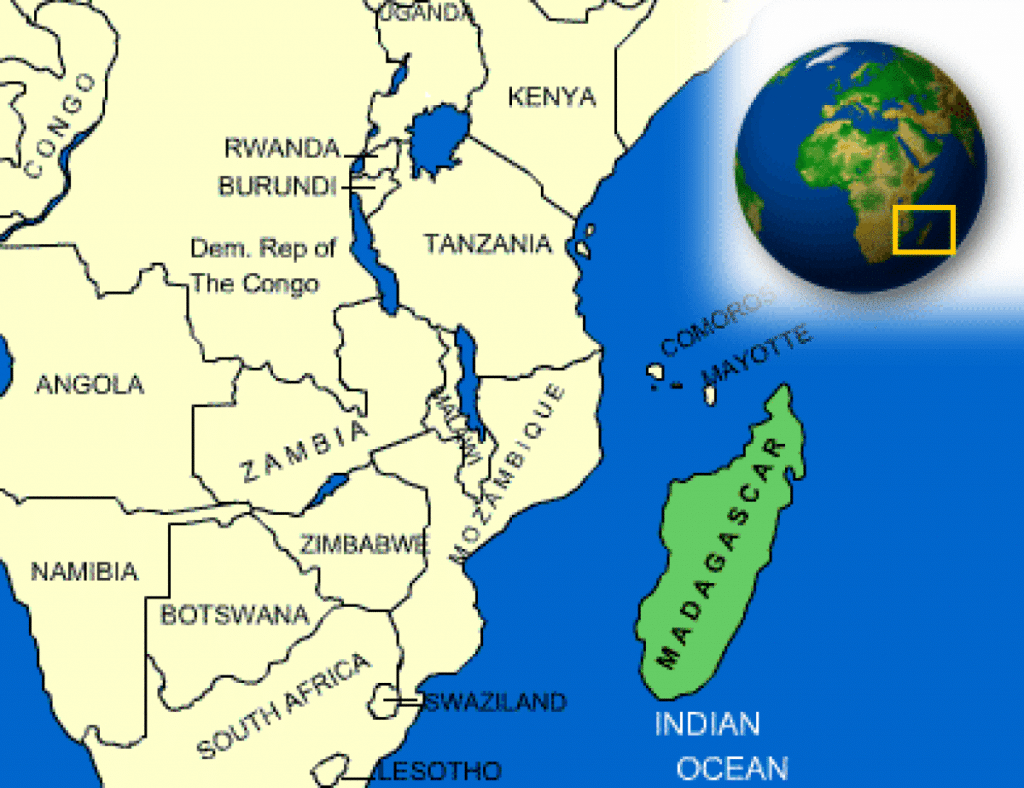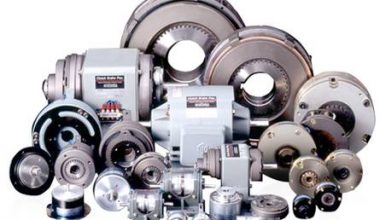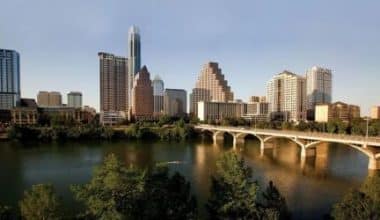Walking through Madagascar’s streets, the weight of poverty is evident. As someone who has studied the economic landscapes of numerous countries, I find this situation both depressing and interesting. Madagascar, widely regarded as the poorest country in Africa, is in the midst of a struggle for economic regeneration that many people outside its borders are ignorant of. While the statistics depict a bleak image, the strength of its people and the untapped potential of its resources provide a ray of optimism. In this post, I will look at the obstacles Madagascar faces in its quest for economic betterment, and provide critical insights for professionals seeking to comprehend the complexities of African economic development.
What is the Poorest country in Africa? Madagascar

Madagascar is considered the poorest country in Africa due to its exceptionally low GDP per capita, high poverty rates, and severe issues such as political instability, natural disasters, and a lack of infrastructure.
Madagascar’s economic woes are widely recognized, yet the scale of the challenges is sometimes underestimated. The World Bank estimates that approximately 75% of Madagascar’s population lives below the international poverty line, earning less than $1.90 per day. This places Madagascar not just as the poorest country in Africa, but also among the poorest in the world.
- GDP per capita: Around $522 (World Bank, 2022).
- Poverty rate: Approximately 75% of the population is below the international poverty level.
- The unemployment rate: It is estimated to be 1.7%, while underemployment is pervasive.
- Life expectancy:67 years (World Bank, 2022).
Political instability, a lack of infrastructure, and frequent natural disasters like cyclones and droughts all contribute to Madagascar’s extreme poverty. These issues are worsened by the island’s isolation, which limits trade prospects and raises the cost of commodities.
Why is Madagascar the Poorest Country in Africa?
Understanding why Madagascar is the poorest country in Africa necessitates a thorough examination of the several interconnected causes that have contributed to its current economic situation. This thorough research exposes a complicated web of difficulties that have existed for decades, making it impossible for the country to break the cycle of poverty.
#1. Political instability
For much of its modern history, Madagascar’s political environment has been unstable.
- Deterrent to Foreign Investment: Political instability causes uncertainty, which is a major impediment for international investors. Businesses are hesitant to invest in a country where the rules of the game could suddenly change owing to a coup or political instability. This lack of investment stifles employment creation, infrastructure development, and economic expansion.
- Disruption of Development Projects: Frequent changes in government frequently result in the abrupt cancellation of development projects, particularly those supported by international organizations or foreign countries. Projects aimed at improving infrastructure, healthcare, or education might be delayed or canceled, wasting resources and time while depriving the public of promised advantages.
- Erosion of Public Trust: Years of political unrest have undermined the public’s faith in government institutions. Corruption is widespread, and many individuals feel estranged from the political process, feeling that their officials are more concerned with power battles than with developing the country. This lack of trust impedes efforts to enact long-term economic policies and reforms.
#2. Environmental Challenges
Madagascar’s unique location and climate render it particularly sensitive to environmental concerns that have terrible economic consequences:
- Natural Disasters: Cyclones, droughts, and floods frequently strike the island, wreaking havoc on agriculture, homes, and infrastructure. Each disaster slows economic growth, often erasing years of progress in a matter of days. Cyclones, for example, can devastate crops shortly before harvest, depriving farmers of income and the populace of food, worsening food insecurity and poverty.
- Deforestation and Biodiversity Losses: Madagascar is home to some of the world’s most distinctive animals, but deforestation is fast destroying their habitats. The decline of trees not only endangers biodiversity but also has serious economic effects. Deforestation causes soil degradation, lowering agricultural production and making it more difficult for rural families to sustain their livelihoods. Furthermore, the loss of woods affects the island’s capacity to attract eco-tourism, which might be a significant source of money.
- Impact on Agriculture: Agriculture is the backbone of Madagascar’s economy, but its success is strongly reliant on favorable environmental circumstances. Poor farming practices, overreliance on rain-fed agriculture, and environmental degradation have resulted in diminishing yields, making it harder for farmers to survive and contributing to widespread poverty.
#3. Infrastructure Deficit
The absence of proper infrastructure is one of the major hurdles to economic development in Madagascar.
- Poor Road Networks: Many of Madagascar’s roads are in poor condition, making transportation of goods and people difficult, expensive, and often impossible during the wet season. This isolation restricts market access, particularly for rural farmers who are unable to sell their produce in metropolitan areas, lowering their income and leading to food scarcity in cities.
- Limited Electricity Supply: Access to electricity is restricted, especially in rural regions. Without consistent energy, businesses cannot operate properly, schools cannot deliver contemporary education, and healthcare institutions struggle to give even basic care. The absence of energy also limits industrial expansion, which is vital for economic growth and employment generation.
- Inadequate Ports and Airports: Madagascar’s ports and airports are antiquated and inefficient, hampering the country’s capacity to conduct international trade. Poor port infrastructure makes exporting commodities expensive and time-consuming, lowering Malagasy product competitiveness on the global market. This reduces the country’s potential to attract international investment and expand its export sectors.
#4. Education and Healthcare

Education and healthcare are crucial for breaking the cycle of poverty, but Madagascar faces substantial obstacles in both sectors.
- Low Educational Attainment: Many children in Madagascar do not complete primary school and those who do frequently receive a subpar education as a result of overcrowded classrooms, a lack of materials, and inadequately prepared teachers. Without a good educational foundation, young people are ill-equipped to seek higher education or vocational training, restricting their employment opportunities and prolonging the poverty cycle.
- Healthcare Challenges: Access to healthcare is limited, especially in rural areas where facilities are rare and underutilized. A lack of healthcare infrastructure results in high rates of preventable sickness and mortality, particularly among youngsters and pregnant women. Malnutrition is also a big concern, affecting the population’s overall health and productivity.
- Impact on Economic Growth: Poor education and healthcare outcomes diminish labor productivity, hence limiting economic growth. A poorly educated population finds it difficult to innovate or accept new technology, and an unwell population is unable to contribute effectively to the economy. Lack of social safety nets, which leave the most vulnerable communities without assistance, exacerbates these problems.
Read Also: Top 10 Richest Men In Africa In 2024
The Struggle For Economic Revival
Despite these daunting challenges, Madagascar is not without hope. Several internal and foreign efforts strive to revitalize the economy and improve inhabitants’ quality of life.
- Agricultural Development: Agriculture supports Madagascar’s economy, employing more than 80% of the population. However, production is low due to outdated farming practices, limited market access, and environmental degradation. Organizations such as the World Food Programme and local non-governmental organizations (NGOs) are trying to improve agricultural techniques, promote sustainable farming, and supply improved seeds and tools. These initiatives are critical to enhancing food security and increasing incomes for rural families.
- Tourism Potential: Madagascar’s remarkable biodiversity, notably its famous lemurs and baobab trees, presents a considerable opportunity for ecotourism. The government, in collaboration with international partners, is aiming to grow this industry by improving infrastructure, encouraging conservation, and recruiting tourists. However, tourism remains underdeveloped as a result of political unrest and infrastructure issues.
- Education and Skills Development: Increasing access to high-quality education is vital to Madagascar’s long-term economic recovery. Initiatives aimed at boosting school enrollment, enhancing teacher training, and offering vocational education are critical for educating the next generation with the skills required to engage in the global economy.
- Foreign Aid and Investment: Madagascar relies substantially on foreign aid, which makes up a sizable component of its budget. However, there is a growing understanding that help alone will not resolve the country’s issues. Sustainable economic growth will necessitate increasing foreign investment, particularly in mining, agriculture, and tourism. The government is working to enhance the business climate by enacting changes that minimize corruption, increase transparency, and safeguard property rights.
Read Also: Top 10 Richest Black People in America in 2024 And Their Networth
Common Misconceptions About Madagascar’s Poverty
#1. Madagascar’s Poverty Is Only Due to Natural Disasters
Natural disasters have a substantial impact on Madagascar, yet they are not the main source of the country’s poverty. Political instability, a lack of infrastructure, and systematic corruption have all contributed to the island’s slow economic progress.
#2. Foreign aid alone can solve Madagascar’s problems
Foreign aid is essential for humanitarian and development programs, but it is not a cure. Internal changes, capacity building, and private-sector investment are all necessary for sustainable growth. Aid should be viewed as an addition to, rather than a replacement for, domestic initiatives.
#3. Madagascar’s Economic Revival Is Impossible
Despite the enormous hurdles, Madagascar has the potential for economic recovery. The country’s abundant natural resources, biodiversity, and strategic location present tremendous prospects for growth, assuming that the appropriate policies and investments are implemented.
Why Professionals Should Care about Madagascar’s Struggle
Madagascar’s economic troubles and prospects for recovery provide excellent lessons for professionals in a variety of sectors, including international development, finance, and environmental conservation. Understanding the complexities of Madagascar’s position can help guide strategies in comparable situations around the world.
For those wishing to participate with or invest in developing economies, a Country Risk Analysis Template can help assess the risks and opportunities. This template can assist professionals examine issues such as political stability, infrastructure, and market potential, allowing them to make more educated decisions.
Country Risk Analysis Template
What steps are being taken to revitalize Madagascar’s economy?
Efforts to revitalize Madagascar’s economy include increasing agricultural production, strengthening the tourism industry, improving education and skill development, and attracting foreign investment through policy reforms.
How does political instability impact Madagascar’s economic development?
Political instability in Madagascar has discouraged foreign investment, hindered economic activity, and eroded public trust in government institutions, all of which have contributed to the country’s economic problems.
Is tourism a viable strategy for Madagascar’s economic development?
Yes, tourism is a potential economic growth strategy in Madagascar due to its unique biodiversity and natural features. The sector will require major investment in infrastructure and stability to realize its full potential.
Can Madagascar’s poverty be eased just by international aid?
No, while international help is necessary, it alone cannot reduce Madagascar’s poverty. Internal changes, capacity building, and private-sector investment are all necessary for sustainable growth.
Key Takeaways
- Madagascar faces multiple obstacles, such as political instability, environmental disasters, and infrastructural inadequacies, all of which contribute to its status as Africa’s poorest country.
- Improving agricultural production is critical for Madagascar’s economic rebirth since it employs the majority of the country’s population and has a direct impact on food security and income.
- Madagascar’s unique biodiversity has huge opportunities for eco-tourism, which might drive economic growth if backed by improved infrastructure and stability.
- Investing in education and skill development is essential for breaking the cycle of poverty and preparing the population to participate in the global economy.
- While foreign aid is necessary, it must be supplemented with internal reforms, capacity building, and private-sector investment to ensure long-term economic growth.
Conclusion
Madagascar’s quest for economic rebirth is formidable, but not insurmountable. The country’s abundant natural resources, resilient people, and growth potential give a route forward if the appropriate plans and investments are implemented. Understanding and addressing these issues as professionals can help to bring about genuine change. How will today’s decisions shape Madagascar’s future?
- LIVING WAGE: Meaning & Benefit
- CHEAPEST STATES TO LIVE IN THE UNITED STATES FOR 2024
- 5 EASY WAYS TO EARN BIG AS A BUSINESS CONSULTANT
- Security Risks and Concerns Regarding Bitcoin






